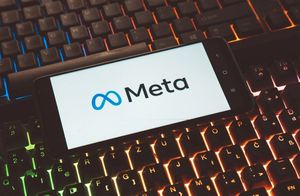NOV03 is Being Investigated to Treat the Signs and Symptoms of Dry Eye Disease Associated with Meibomian Gland Dysfunction
NOV03 PDUFA Action Date is June 28, 2023
Bausch + Lomb Corporation (NYSE/TSX: BLCO) (“Bausch + Lomb”), a leading global eye health company dedicated to helping people see better to live better, and Novaliq GmbH, a biopharmaceutical company focusing on first- and best-in class ocular therapeutics, today announced that Ophthalmology, the peer-reviewed journal of the American Academy of Ophthalmology, has published results from the pivotal Phase 3 trial GOBI, which is one of two pivotal Phase 3 trials for NOV03 (perfluorohexyloctane). NOV03 is being investigated to treat the signs and symptoms of dry eye disease (DED) associated with Meibomian gland dysfunction (MGD). The U.S. Food and Drug Administration (FDA) assigned NOV03 a Prescription Drug User Fee Act (PDUFA) action date of June 28, 2023.
“NOV03 was specifically developed to address excess tear evaporation and alleviate the signs and symptoms of dry eye disease associated with Meibomian gland dysfunction,” said Christina Ackermann, president, Ophthalmic Pharmaceuticals, Bausch + Lomb. “These findings reinforce NOV03 as a potential new treatment option that is distinct from anti-inflammatory and immunomodulatory agents. We are excited that the FDA is reviewing the New Drug Application for NOV03, which, if approved, would provide millions of patients with dry eye disease associated with Meibomian gland dysfunction a prescription treatment option.”1
DED is one of the most common ocular surface disorders, with MGD as a major cause of development and progression, affecting approximately nine out of 10 people with DED.2,3 DED due to MGD is caused by a deficient tear film lipid layer that leads to increased tear evaporation.4 There is currently no approved prescription eye drop in the United States indicated for DED associated with MGD.
“These data show that the GOBI trial met both co-primary endpoints and all key secondary endpoints, with statistical significance achieved in treating the signs and symptoms of dry eye disease associated with Meibomian gland dysfunction as early as day 15,” said Christian Roesky, Ph.D., CEO, Novaliq. “We are pleased to be able to share these exciting findings in Ophthalmology, and we look forward to our continued collaboration with Bausch + Lomb to hopefully bring NOV03 to market in the United States, and ultimately address an unmet medical need for those suffering with dry eye disease associated with Meibomian gland dysfunction.”
"All of the patients in the study were required to meet specific criteria indicating presence of Meibomian gland dysfunction. The findings of this study reinforce NOV03 as a potential treatment option for this patient population with unmet medical needs,” said Yehia Hashad, M.D., executive vice president, Research & Development and chief medical officer, Bausch + Lomb.
The data from the Phase 3, multicenter, randomized, hypotonic saline-controlled, double masked GOBI study was based on results from 597 subjects aged 18 years and older who were randomized to either receive treatment with NOV03 four times daily or hypotonic saline solution four times daily (n=303 NOV03; n=294 saline).
The two primary endpoints were change from baseline at Week 8 (Day 57 ± 2) in total corneal fluorescein staining (tCFS) and eye dryness Visual Analog Scale (VAS) score. Key secondary endpoints included change from baseline in eye dryness VAS score and tCFS at Week 2 (Day 15 ± 1) and eye burning/stinging VAS score and central corneal fluorescein staining (cCFS) at Week 8. Significant improvements vs. hypotonic saline solution were seen as early as day 15. Data highlights include:
Primary endpoints
- At Week 8, change from baseline in tCFS was statistically significantly greater in the NOV03 arm compared to the control saline group (least-squares [LS] mean treatment difference, -0.97; (95% confidence interval [CI]: -1.40 vs. -0.55) (P<0.001)).
- At Week 8, eye dryness VAS score was statistically significantly improved in the NOV03 arm compared to control group (LS mean treatment difference, -7.6; (95% CI: -11.8 vs. -3.4) (P<0.001).
Key secondary endpoints
- At Week 2 (day 15), tCFS and eye dryness VAS score were statistically significant compared to saline, with an LS mean treatment difference (95% CI) for change from baseline in tCFS of -0.6 (-0.9, -0.2) (P<0.01) and VAS score of -4.7 (-8.2, -1.2) (P<0.01).
-
At Week 8, VAS burning/stinging score and cCFS also favored the NOV03 group, with an LS mean treatment difference (95% CI) for change from baseline in VAS burning/stinging score of -5.5 (-9.5, -1.6) (P<0.01) and cCFS of -0.2 (-0.4, -0.1) (P<0.01).
In the study, NOV03 was well tolerated with few subjects experiencing ocular adverse events (AEs) (9.6% NOV03 group, 7.5% control group) or treatment-related ocular AEs (6.3% NOV03 group, 3.1% control group). Most AEs were mild to moderate in severity. The most common AEs (incidence ≥1%) experienced in the NOV03 group were blurred vision, mostly mild and transient (3.0% vs 0.3%), instillation site pain (1.0% vs 1.0%), and eye discharge (1.0% vs. 0.0%). Ocular AEs led to treatment discontinuation in one subject in the NOV03 group (eye irritation) and three subjects in the saline group (conjunctivitis, dry eye, punctate keratitis).
About NOV03 (perfluorohexyloctane) Ophthalmic Solution
NOV03 is an investigational, proprietary, water-free, single-component preservative-free eye drop.5 In 2019, Bausch + Lomb acquired an exclusive license for the commercialization and development of NOV03 in the United States and Canada. Results from the pivotal Phase 2 trial (SEECASE) were published in Cornea in September 2021. Data from the first pivotal Phase 3 trial (GOBI) were presented at the American Society of Cataract and Refractive Surgery (ASCRS) annual meeting in Washington, D.C. on April 24, 2022. Data from the second pivotal Phase 3 trial (MOJAVE) were presented at the Association for Research in Vision and Ophthalmology (ARVO) annual meeting in Denver on May 2, 2022. The clinical program for NOV03 concluded with the completion of a multi-center, open-label, single-arm, 12-month safety extension trial (KALAHARI). In September 2022, Bausch + Lomb and NOV03 announced that the U.S. FDA had accepted the NDA filing for NOV03 and assigned a PDUFA action date of June 28, 2023.
About Novaliq
Novaliq is a biopharmaceutical company focusing on the development and commercialization of first- and best-in-class ocular therapeutics based on EyeSol®, the worldwide first water-free technology. Novaliq offers an industry-leading portfolio addressing today's unmet medical needs of millions of patients with eye diseases. Novaliq GmbH is headquartered in Heidelberg, Germany and Novaliq Inc. has an office in Cambridge, MA, USA. The long-term shareholder is dievini Hopp BioTech holding GmbH & Co. KG, an active investor in Life and Health Sciences companies. More on www.novaliq.com.
About Bausch + Lomb
Bausch + Lomb is dedicated to protecting and enhancing the gift of sight for millions of people around the world – from the moment of birth through every phase of life. Its comprehensive portfolio of more than 400 products includes contact lenses, lens care products, eye care products, ophthalmic pharmaceuticals, over-the-counter products and ophthalmic surgical devices and instruments. Founded in 1853, Bausch + Lomb has a significant global research and development, manufacturing and commercial footprint with more than 12,000 employees and a presence in nearly 100 countries. Bausch + Lomb is headquartered in Vaughan, Ontario with corporate offices in Bridgewater, New Jersey. For more information, visit www.bausch.com and connect with us on Twitter, LinkedIn, Facebook and Instagram.
Forward-looking Statements
This news release may contain forward-looking statements, which may generally be identified by the use of the words “anticipates,” “hopes,” “expects,” “intends,” “plans,” “should,” “could,” “would,” “may,” “believes,” “estimates,” “potential,” “target,” or “continue” and variations or similar expressions. These statements are based upon the current expectations and beliefs of management and are subject to certain risks and uncertainties that could cause actual results to differ materially from those described in the forward-looking statements. These risks and uncertainties include, but are not limited to, the risks and uncertainties discussed in Bausch + Lomb’s filings with the U.S. Securities and Exchange Commission and the Canadian Securities Administrators, which factors are incorporated herein by reference. They also include, but are not limited to, risks and uncertainties caused by or relating to the evolving COVID-19 pandemic, and the fear of that pandemic and its potential effects, the severity, duration and future impact of which are highly uncertain and cannot be predicted, and which may have a material adverse impact on Bausch + Lomb, including but not limited to its project development timelines, launches and costs (which may increase). Readers are cautioned not to place undue reliance on any of these forward-looking statements. These forward-looking statements speak only as of the date hereof. Bausch + Lomb undertakes no obligation to update any of these forward-looking statements to reflect events or circumstances after the date of this news release or to reflect actual outcomes, unless required by law.
References
- National Eye Institute. Dry Eye. Last updated April 8, 2022. Accessed December 21, 2022. https://www.nei.nih.gov/learn-about-eye-health/eye-conditions-and-diseases/dry-eye
- Leonardi, A., Modugno, R. L., & Salami, E. (2021). Allergy and Dry Eye Disease. Ocular immunology and inflammation, 29(6), 1168-1176. https://doi.org/10.1080/09273948.2020.1841804.
- Lemp, MA, Crews, LA, Bron AJ. (2012). Distribution of Aqueous-Deficient and Evaporative Dry Eye in a Clinic-Based Patient Cohort: a retrospective study. Cornea, 31(5), 472-478. https://journals.lww.com/corneajrnl/Abstract/2012/05000/Distribution_of_Aqueous_Deficient_and_Evaporative.2.aspx
- Geerling G, Baudouin C, Aragona P, et al. (2017). Emerging strategies for the diagnosis and treatment of meibomian gland dysfunction: Proceedings of the OCEAN group meeting. The Ocular Surface,15(2): 179-192. https://doi.org/10.1016/j.jtos.2017.01.006
- In December 2019, Bausch Health acquired the rights from Novaliq GmbH to pursue development and commercialization of NOV03 for DED and combination products based on NOV03 in additional ophthalmic indications in the United States and Canada.
All product/brand names and/or logos are trademarks of the respective owners.
© 2023 Bausch & Lomb Incorporated or its affiliates.
NOV03.0064.USA.22
View source version on businesswire.com: https://www.businesswire.com/news/home/20230104005244/en/
Contacts
Novaliq Media Contact:
Simone Angstmann-Mehr
info@novaliq.com
Bausch + Lomb Investors:
Arthur Shannon/Allison Ryan
arthur.shannon@bausch.com;allison.ryan@bausch.com
(877) 354-3705 (toll free); (908) 927-0735
Bausch + Lomb Media Contacts:
Lainie Keller/Kristy Marks
lainie.keller@bausch.com;kristy.marks@bausch.com
(908) 927-1198; (908) 927-0683






